There are many other manager jobs. In this post, we’ll look into different manager job profiles in a fun way so can get an idea easily. In the last post, we looked into the facts that project management and project manager role has a very bright future ahead. In fact, the demand is increasing exponentially, while we’re unable to produce quality project managers to keep up with that. However, project manager is not only management role, which you can get into.
Awesome Manager Job Profiles
Project Manager
Project Manager will lead the planning and implementation of projects, working with internal and external clients, specialists, consultants and suppliers to identify requirements, develop budgets and organize the project from initial planning and development through to implementation and maintenance. AXELOS
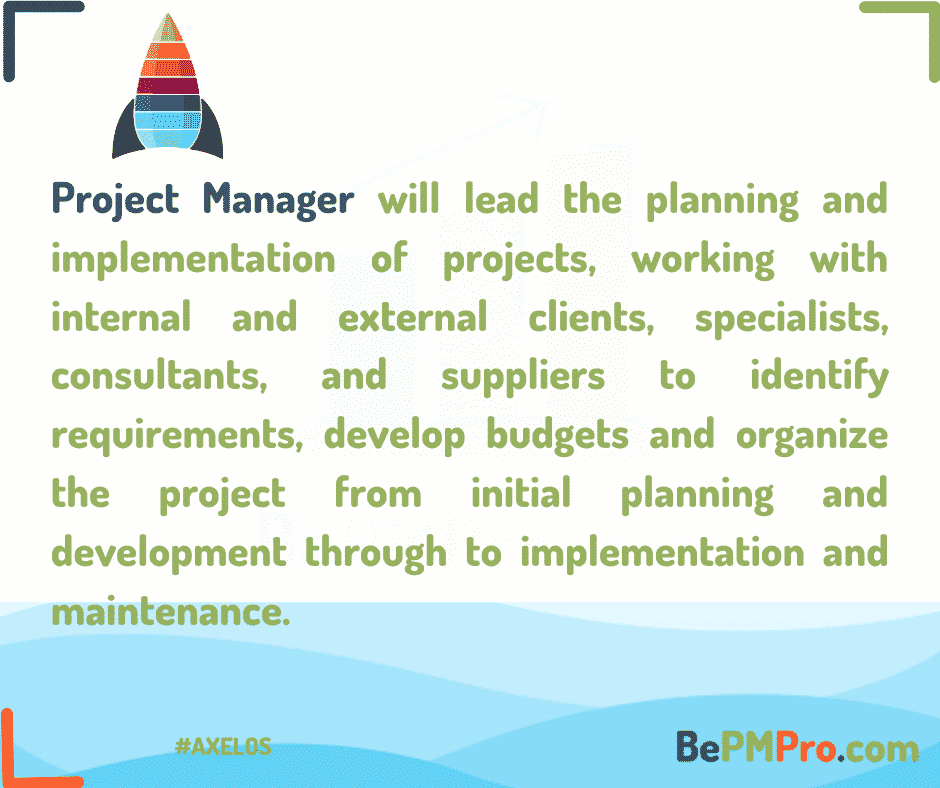
Business Continuity Manager
Business Continuity Manager is one of a key manager role profiles with responsibility for ensuring that there are plans in place for the organization to continue to function in the event of a disaster or catastrophic event. He works with the IT Security Manager and IT Architects to develop recovery plans for continuation of business systems and processes.
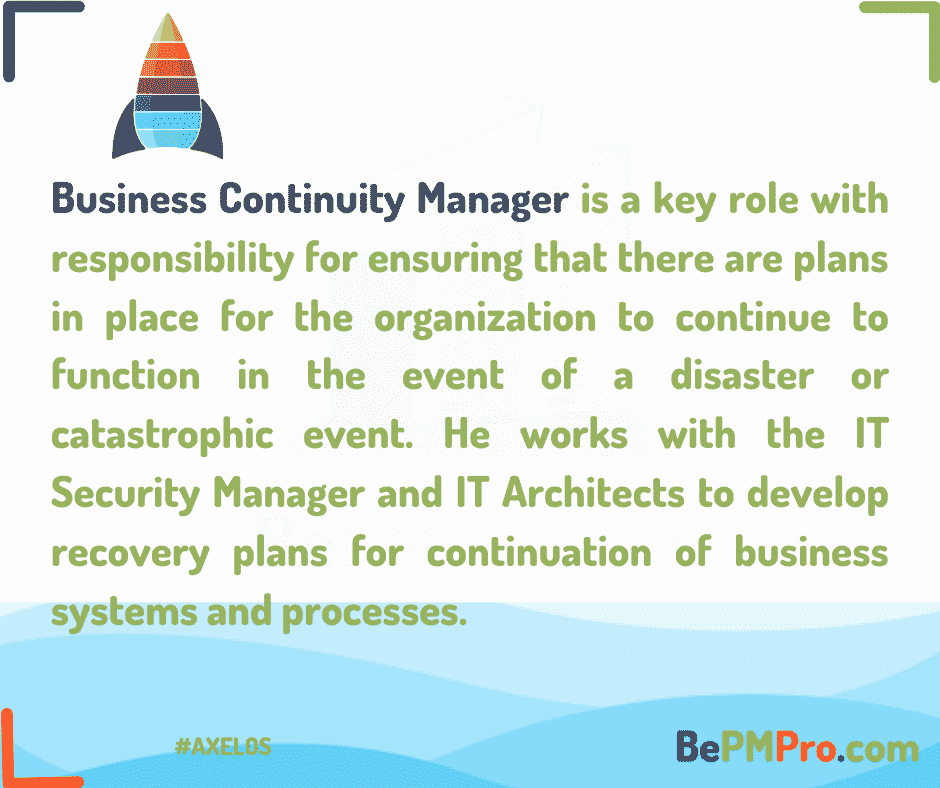
Business Relationship Manager
Business Relationship Manager will take the lead in building strong working relationships between its organization and one or more business units of partner organizations or it’s own organization, to ensure that the services meet their needs. He works with the business to shape & prioritize the requirements for improvement in efficiency or service quality.

Incident Manager
Incident Manager leads in establishing the policies and systems for delivery of a quality incident management process, and then works with the business to ensure that these are adopted and adhered to. He’s responsible for monitoring, analyzing and reporting trends in incidents, issues and risks and compliance with the best practices.
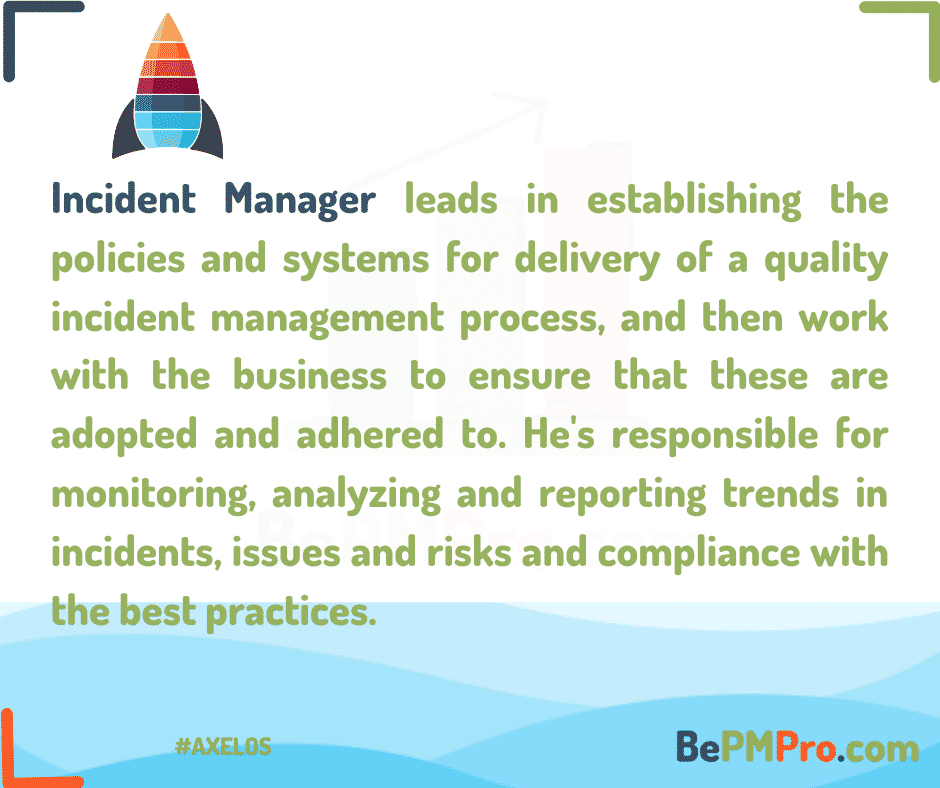
Change Manager
Change Manager addresses the challenges with responsibility for standardizing the methods, tools and procedures for handling of all changes to the systems and infrastructure. He protects the live environment by ensuring efficient control and scheduling of software and hardware modifications, and by preventing any unpredictable outcomes.
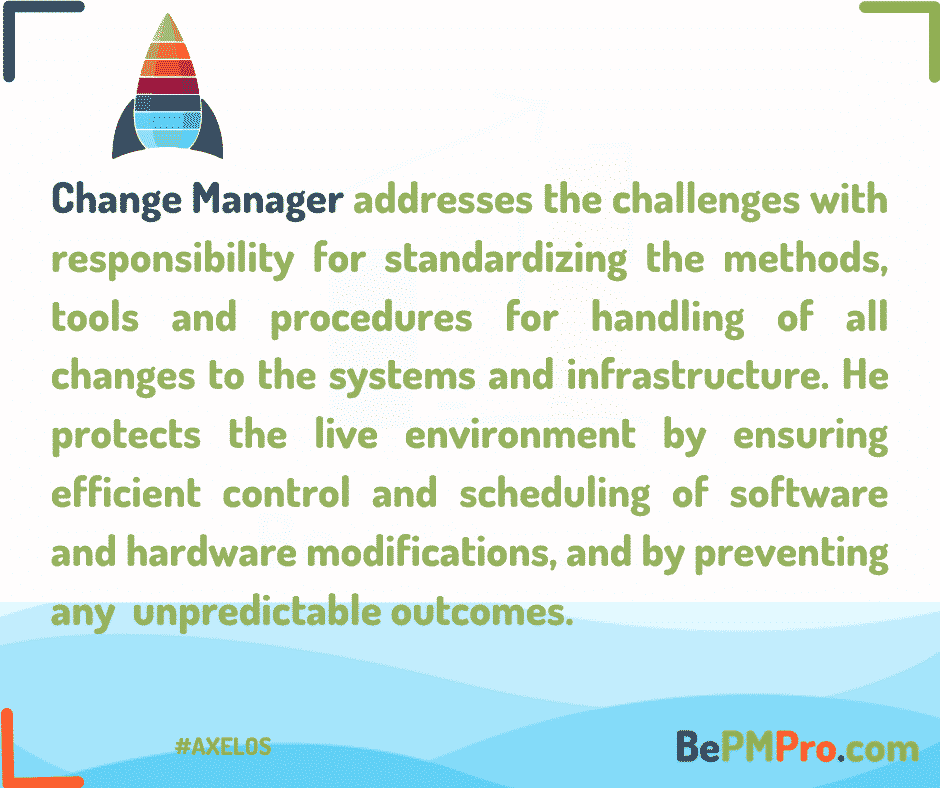
Configuration Manager
Configuration Manager is responsible for the identification of all IT infrastructure including software, hardware, virtual machines, cloud services and mobile services, and for recording the information in the configuration management system, and for tracking configuration items through their full life cycle.
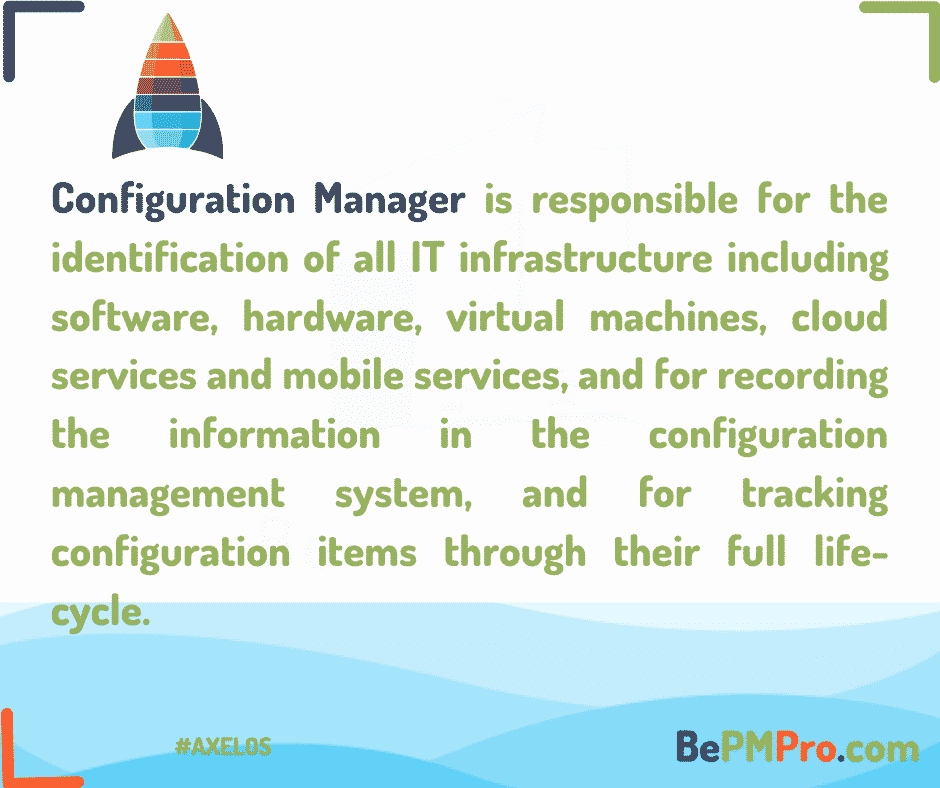
Operations Manager
Operations Manager is responsible for monitoring and analyzing service provision, planning the processes for incident or problem management that can return services to normal without delay, and managing the change. He provides effective delivery of a live service operation that meets the expectations and service levels agreed with customers.
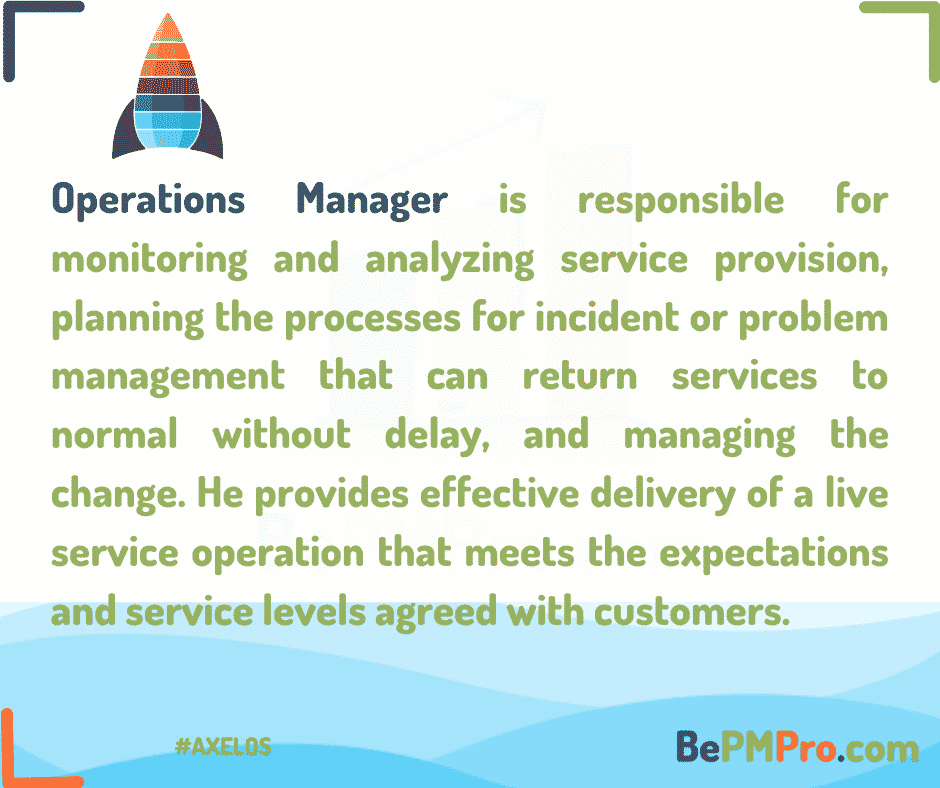
Service Desk Manager
Service Desk Manager’s primary responsibility is managing customer service. He manages service desk day-to-day operations, coaches team members in answering customer queries, hires service staff, trains the team members, and motivates the team to provide high quality customer service.

Service Level Manager
Service Level Manager is the key point of contact for negotiating service levels and key performance indicators for IT services with the business and for documenting these in a set of service level agreements (SLAs) and contracts against which business customers can monitor performance.
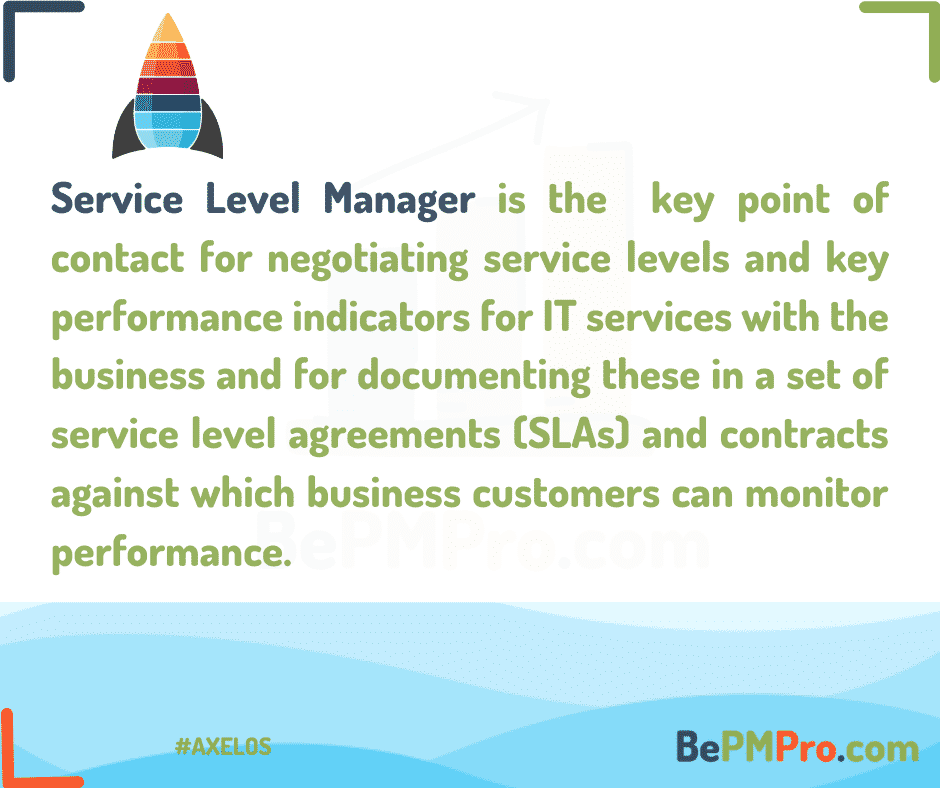
Supplier Relationship Manager
Supplier Relationship Manager will be responsible for procuring products and services on behalf of the organization and the business, using their networks and negotiation skills to achieve best value and service levels. This role includes sourcing suppliers, negotiating contracts, managing delivery & acting as a conduit between the business and the supplier.
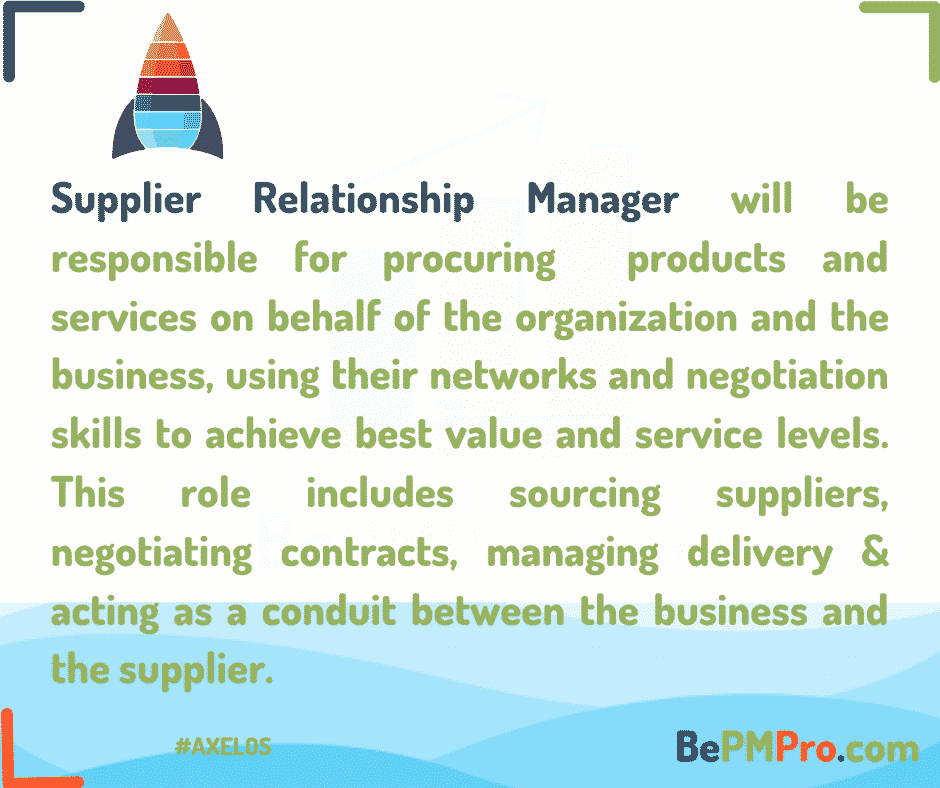
Release Manager
Release Manager specializes in planning & managing the release of new or changed software and hardware into test and live environments. This means being able to bring together the multiple project deliverables that are required for release and to ensure that they work as an integrated package.


You must log in to post a comment.